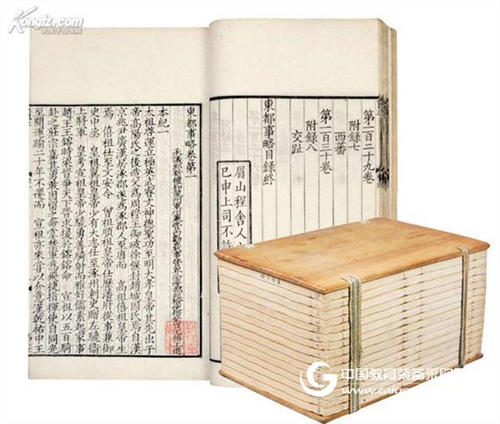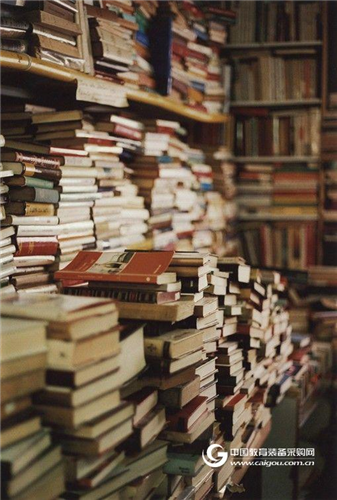1, the status of digital research of ancient books Ancient books, also known as classics and literature, refer to books that have not been printed using modern printing techniques. Five thousand years of Chinese civilization from the Oracle, Jian, scrolls and then installed to the line, leaving a large number of valuable ancient books, as the continuation of the Chinese civilization and cultural evidence, ancient books is very important. The traditional method of collation of ancient books is to form new editions by reviewing and interpreting ancient books (approved, collated, annotated), etc., which is convenient for modern people to read. The traditional method of collating ancient books relies mainly on manual work, which has the disadvantages of complicated operation procedures and low efficiency, and the new version is still in the form of books, which is difficult to use again. After the advent of computer technology, there were new tools and methods for the collation of ancient books, namely the digital technology of ancient books. Through the use of information technology to process and collate ancient books and convert them into electronic data, they can be stored and transmitted through optical discs and networks, effectively solving the shortcomings of traditional ancient books. The digitization of Chinese ancient books was first established in the 1970s, beginning with the United States, where computer technology was developed. After introducing related technologies, China has produced a large number of valuable results. The National Library’s “Digitalization Program for Special Books for Ancient Books†completed achievements such as “Oracle Boneâ€, “Digital Local Recordsâ€, “Bei Jing Jing Hua Huaâ€, “Dunhuang Relicsâ€, “Xi Xia Broken Gold†and “Yongle Grand Ceremonyâ€. Other research institutions have also launched a large number of products. Internationally, a large amount of research work has also been carried out on the digitization of ancient books of the Latin system. The IMPACT (Improving Access to Text) project, jointly launched by the 26 libraries of the European Union, is a project that promotes the digitalization of ancient Latin texts through the study of OCR (Optical Character Recognition) technology. 2. Development and bottleneck of digitalization of ancient books The development of digitization of Chinese ancient books has gone through three stages: the joint catalog stage, the catalog + image stage, and full-text search. The first stage was the 1980s. The joint directory was developed for the ancient database retrieval system and stored in the form of a database. Through the use of computers, the catalog data retrieval, content collation, storage, quantity statistics, and indexing of ancient Chinese books have greatly improved the retrieval methods of ancient books, and they are auxiliary tools for ancient books. The initial database of ancient books was mainly a bibliographic database. Many provincial and municipal libraries have established bibliographic databases. Among them, Nanjing Library has established 400,000 ancient Chinese bibliographic data. The second stage is the catalog + imaging stage of the 1990s. In this stage, an ancient book or an ancient book database is created on the CD-ROM, which can be searched through the catalog, browse the original image page, and is also called the CD-ROM version of ancient books. In 1997, Wuhan University Press launched a total of 150 CD-ROMs of the "Siku Quanshu CD-ROM." Based on the "Siku Quanshu" written by Wen Yuan Geben, this book scanned more than two million pages of the book into electronic files. In the third stage, digitized ancient books entered the stage of full-text search since 2000. The full text of the ancient book is entered into the database system. Through the matching of the text and the search item, the exact search from the straight to the paragraph can be realized. In addition, it has been networked and has established a joint database on the Internet with libraries in each region as nodes and the network as a link. Through network sharing services, you can no longer rely on personal storage and you can get massive resources. However, the lack of digital resources in ancient books has affected the development of networking. Digital processing of ancient books has many problems. The first step in digitalization of well-ordered ancient books is the entry of ancient books. There are two methods for digitizing books, which are manual keyboard input and computer OCR scan input. The manual keyboard input belongs to the manual operation and requires the entry personnel to look at the books and enter them verbatim, which has the disadvantages of low efficiency and high cost. OCR is an advanced automation technology. It uses machines to recognize images as texts. It is the main means for digitizing a large number of books. Match number OS12002V professional ancient document scanner, using projected non-glare cold light source technology to provide extremely adequate protection for precious ancient books and digital documents, high-precision true color scanning lens perfect reproduction of the true details of the original, unique 90 ° V-type platen, especially suitable for the digitization of precious materials that can be bound and cannot be fully opened, automatically opens the press glass, self-adjusts the speed and pressure of the V glass drop, protects the literature data to the utmost, and provides user-friendly design. Safe, reliable and ergonomic operating environment. Technical Parameters: Description: Top-mounted scanning head, desktop non-contact scanning, suitable for cultural relics, ancient books, books, newspapers, calligraphy, maps and other single-page or bound volumes. Scan size: 600 (2 x 300) x 450 mm (> 2 x Super A3 Drafting table: books up to 150 mm thick, V-shaped table can be adjusted 90°; adjustable V-shaped table on both sides, central, height, book spine width. Scan mode: 42-bit color acquisition | 24-bit color output 14-bit grayscale acquisition | 8-bit grayscale output 1-bit black and white acquisition | 1-bit black and white output Optical resolution: 600dpi Output resolution: 100-600dpi Scanning speed: 3.8 seconds (400dpi) Scanner Interface: IEEE1394 Firewire Interface Image Format: All standard formats, such as TIFF Not Compressed, TIFF G4, JPEG, JPEG2000, PDF, multi-page TIFF, BMP, PCS, PNG, etc. Scanning Software: OS12 Scan Software Image processing software (optional): Correcting, removing noise, flipping, blackout, masking, sharpening, bending correction, clipping, black and white scanning and dynamic threshold. Perfect Book (Optional): Dual Scan System, Perfect 3D Scan, Spine Bend Correction, and Automatic Document Detection. Electrical requirements: 220V/50Hz. Volume (W x Dx H): 1023 x 880 x 1025 mm Jumbo Roll Toilet Paper,Jumbo Toilet Paper,Jumbo Toilet Roll,Jumbo Toilet Paper Roll DONGGUAN YEE HUP TRADING CO,.LTD , https://www.yeehupacks.com


February 15, 2023